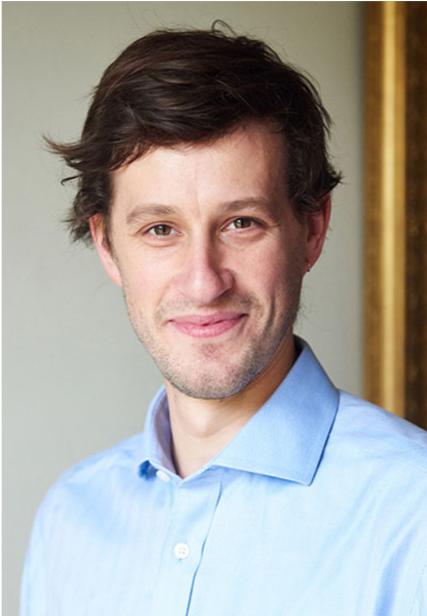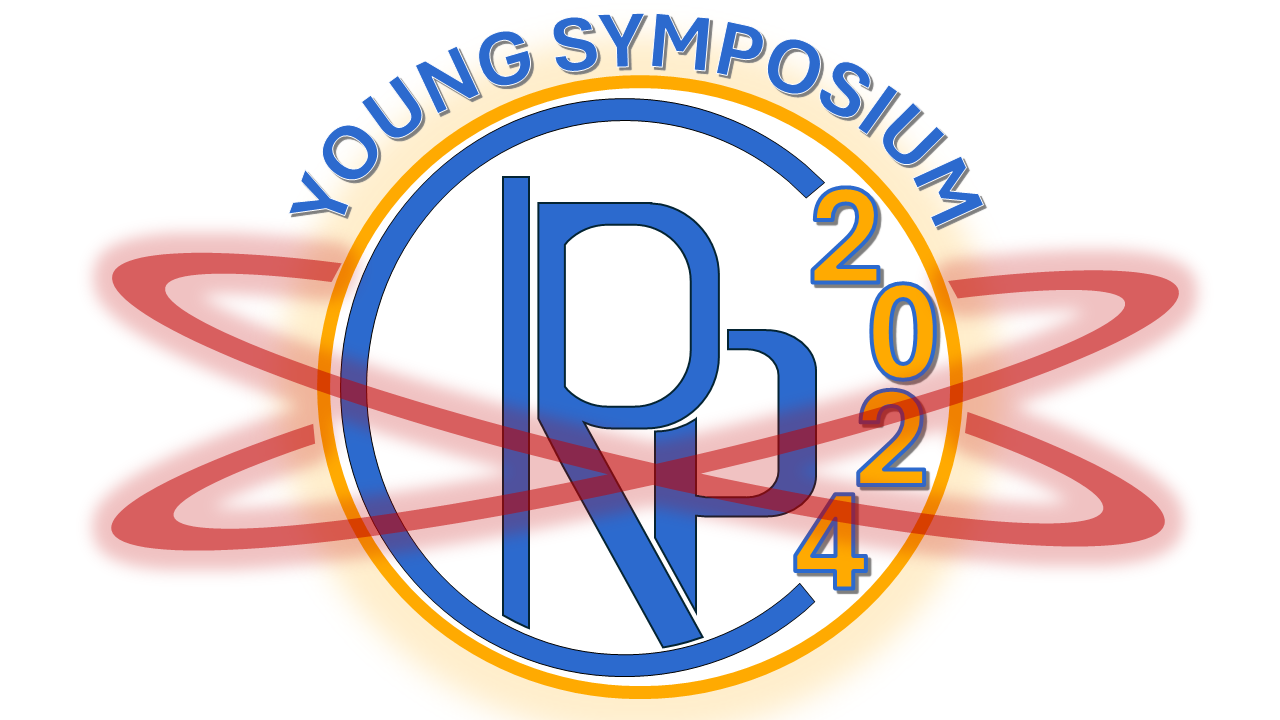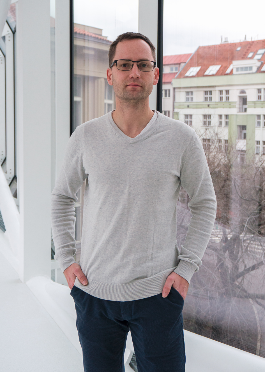INVITED SPEAKERS
ALASTAIR
LENNOX

The Lennox group is interested in fundamental reactivity and mechanism in organic chemistry, and how these insights can be used to create novel synthetic organic methods with sustainability and green chemistry as central drivers. Within this vein they are interested in the exploration of electrochemistry as a tool for performing selective redox transformations, because it has been shown to provide specific advantages over conventional redox reagents in terms of selectivity, scalability, safety and sustainability. The Lennox group research programme also have a strong emphasis on fluorine containing molecules, and in particular the synthesis of new selective fluorination reactions and the creation of new fluorinated building blocks.
The title of his Plenary Lecture is: “Exploring Electrochemistry as a Tool for New Reactivity”.
Redox transformations and electron transfer reactions are essential for the incorporation and manipulation of functional groups in the synthesis of complex molecules. Traditionally, stoichiometric redox reagents are required for such transformations, which are typically not atom-economical, hazardous, use heavy metals and/or expensive reagents.
Although electrochemistry in organic synthesis has a long-standing history, it has only recently emerged as a viable alternative for wide-spread application in synthesis. This is due to the rapid development and introduction of myriad different transformations, and reactor types, including the ability to run large scale reactions in flow.
In this presentation, I will detail our recent efforts in the development of new reactions using electrochemistry. In the reductive sense we have been developing methods for the defluorination of trifluoromethyl groups, and in the oxidative sense, we have been undertaking C-H functionalisation reactions. Details of reaction optimisations and our mechanistic understanding will be provided.
Dr. Kevin Cariou graduated from Chimie ParisTech in 2002, he received his PhD in 2006 from the University Pierre and Marie Curie (now Sorbonne University) in Paris (France) under the supervision of Prof. M. Malacria and L. Fensterbank, where he studied platinum- and gold-catalyzed transformations with a joint CNRS-Sanofi BDI fellowship.
From 2007 to 2009, including one-year as a Lavoisier fellowship holder, he worked as a postdoctoral researcher in the group of Prof. A. J. Frontier at the University of Rochester (NY, USA) in the field of total synthesis. He was appointed a Chargé de Recherche in 2009 at the CNRS at the ICSN in the team Synthesis and Methodology Applied to Research in Therapeutics (SMART) led by Dr R. H. Dodd. He obtained his Habilitation à Diriger les Recherches (HDR) in 2015. From 2017 to 2019, he was the leader of the SMART team before moving to Chimie ParisTech in 2020, when he officially joined the group of Gilles Gasser, and in 2021 he was appointed CNRS Research Director.
His research interest lie in the development of new synthetic methods, with a focus on iodine(III) reagents and nitrogen-rich building blocks, and their application toward the synthesis of biologically active molecules, in particular antibacterials.
The title of his Plenary Lecture is: “Cycloadditions and Cyclizations with Ynamides”.
Ynamides are particularly useful molecular bricks that can be activated in a variety of way to initiate all kinds of transformation. For our part we have been interested by the study of rather underexplored modes of activation such as basic or oxidative conditions.
During this talk, we will first present our latest results on the development of various transformations of ynamides to access original nitrogen-containing heterocycles, such as azetidinimines and amino-ferrocenophanes, through cycloadditions and cyclization process.
Gilles Gasser was born, raised and educated in the French-speaking part of Switzerland. After a PhD thesis in supramolecular chemistry with Prof. Helen Stoeckli-Evans (University of Neuchâtel, Switzerland), Gilles undertook two post-docs, first with the late Prof. Leone Spiccia (Monash University, Australia) in bioinorganic chemisty and then as an Alexander von Humboldt fellow with Prof. Nils Metzler Nolte (Ruhr-University Bochum, Germany) in bioorganometallic chemistry. In 2010, Gilles started his independent scientific career at the University of Zurich as a Swiss National Science Foundation (SNSF) Ambizione Fellow before obtaining a SNSF Assistant Professorship in 2011. In 2016, Gilles moved to Chimie ParisTech, PSL University (Paris, France) to take a PSL Chair of Excellence. Gilles is a RSC Fellow recipient and received several fellowships and awards including the Alfred Werner Award from the Swiss Chemical Society, an ERC Consolidator Grant and Proof of Concept, the Thieme Chemistry Journal Award, the Jucker Award for his contribution to cancer research, the European BioInorganic Chemistry (EuroBIC) medal and recently the Pierre Fabre Award for therapeutic innovation from the Société de Chimie Thérapeutique (SCT). He was an Overseas Fellow of the Churchill College, University of Cambridge in 2022. Gilles’ research interests lay in the use of metal complexes in different areas of medicinal and biological chemistry.
The title of his Plenary Lecture is: “Metal Complexes as Therapeutics and Diagnostics”.
Metal complexes are currently playing a tremendous role in medicine. For example, the platinum complex cisplatin and its derivatives oxaliplatin and carboplatin are employed in more than 50% of the treatment regimes for patients suffering from cancer!
Over the last years, our research group focused its attention on the development of novel metal complexes based on iron, copper, rhenium, ruthenium, osmium as imaging and therapeutic agents against cancer and parasitic diseases. One of such has now entered clinical trial. During this talk, we will present our latest results, including in vivo results, on these topics, notably the use of metal complexes as photosensitizers for photodynamic therapy against cancer.
Jan Holub defended his PhD in 2016 under the tutelage of Prof. J.-M. Lehn at the Institut de Science et d’Ingénierie Supramoléculaires, Strasbourg, France studying metallosupramolecular self-assembly. He then joined the group of Prof. A. Llobet at Institut Català d’Investigació Química, Tarragona, Spain where he studied the use of molecular complexes for electrocatalytic activation of various small molecules. After a short period at the University of Cambridge, Cambridge, United Kingdom with Prof. G. Bernardes, he obtained a junior position at the University of Chemistry and Technology, Prague, Czech Republic focusing on guided metalo-driven self-assembly for the preparation of functional architectures and on electrocatalysis based on transition metals complexes.
The title of his Plenary Lecture is: “Multivalency through self-assembly: supramolecular grids in bio-relevant interactions and material science“.
Such as bricks must be precisely organized to construct a wall, or a block of stone must be sculptured to serve a purpose. In the same way, the practical potential of a molecule can often be manifested only through its multiarrangement into “material” or through decoration with functional appendages.
The supramolecular chemistry gives us a rich set of tools to build well-defined structures through designed self-assembly. Using orthogonal principles one can increase not only the complexity of the self-assembly but also alter the compound’s use. In our group we implement these principles to build so-called supramolecular grids, a diverse yet underdeveloped group of coordination compounds with very regular structures. The relatively low number of their studies, compared to other supramolecular entities (e.g. cages, rotaxanes), is caused by the fact that the grids are mostly studied in their basic functionalised form as a single unit, thus greatly limiting their utility and applicability.
However, in the spirit of the initial paragraph, we try to imbue our grids with a practical function through additional organisation or peripheral functionalisation and use them as platforms for catalysis or as multivalent ligands.
In the lecture, we will talk about the basic conditions for the formation of grids, different supramolecular principles involved with grids, and how we implement these principles to prepare multivalent ligands for interactions with proteins or tailorable surface layers for (electro)catalysis.



